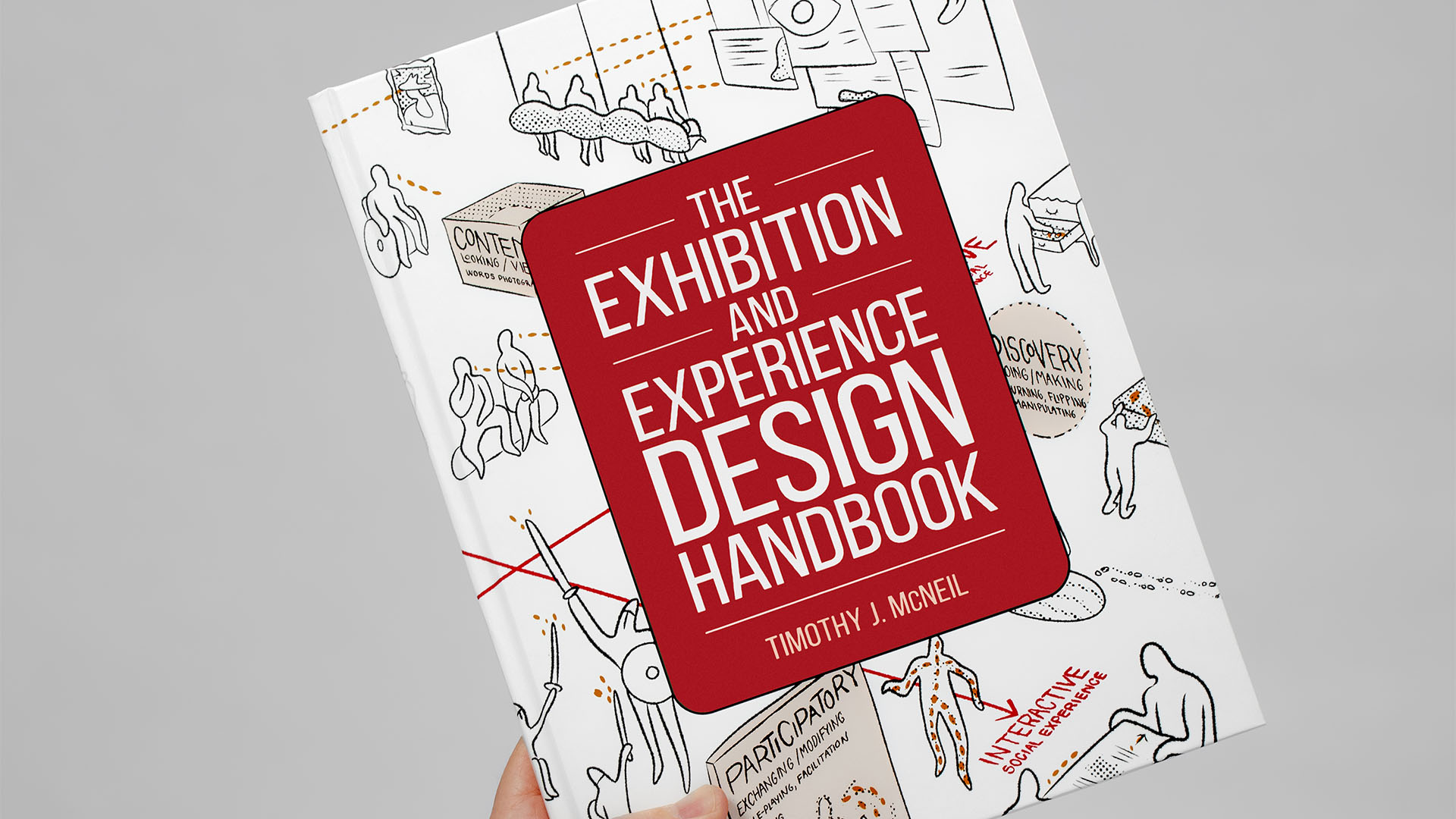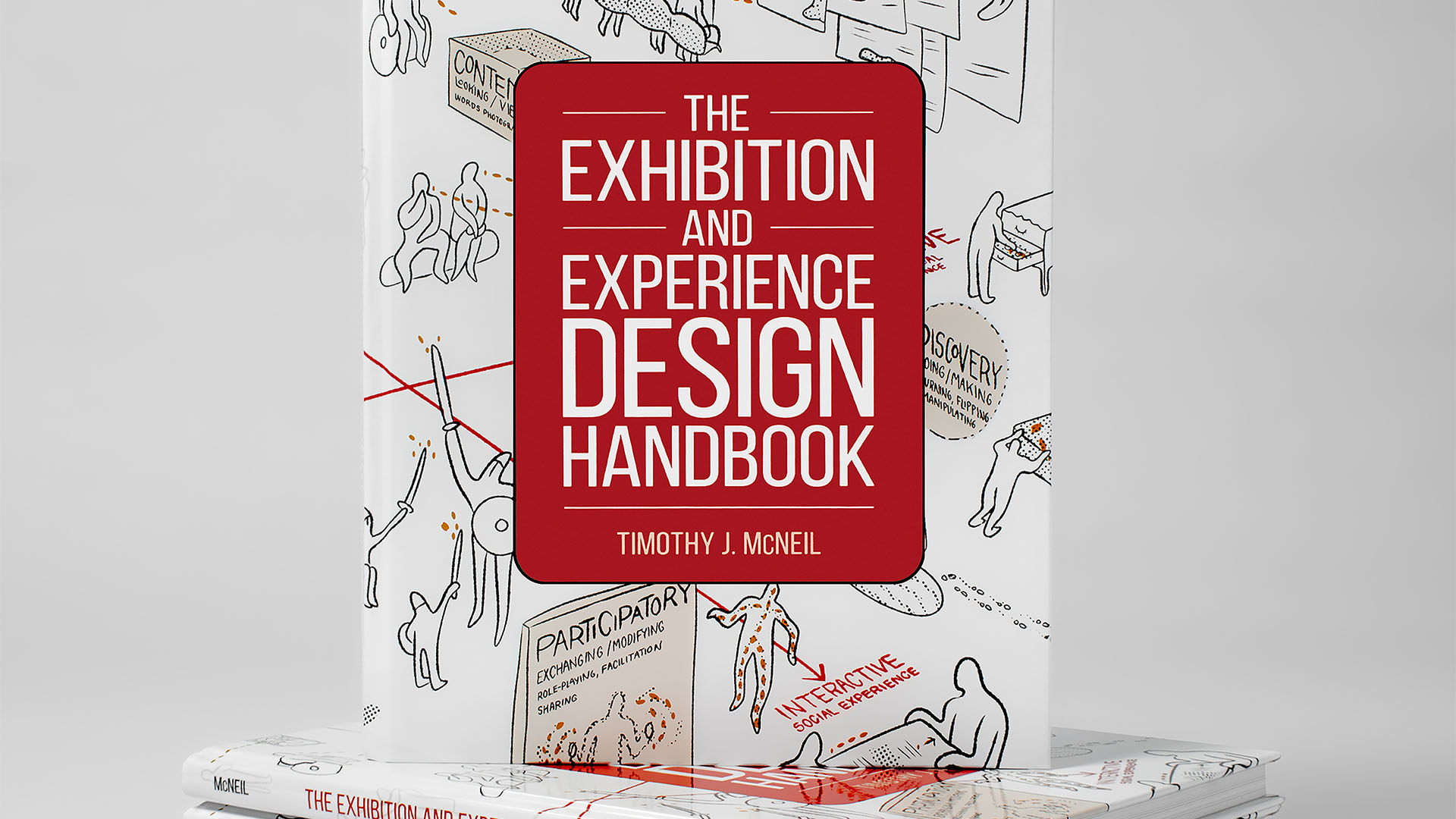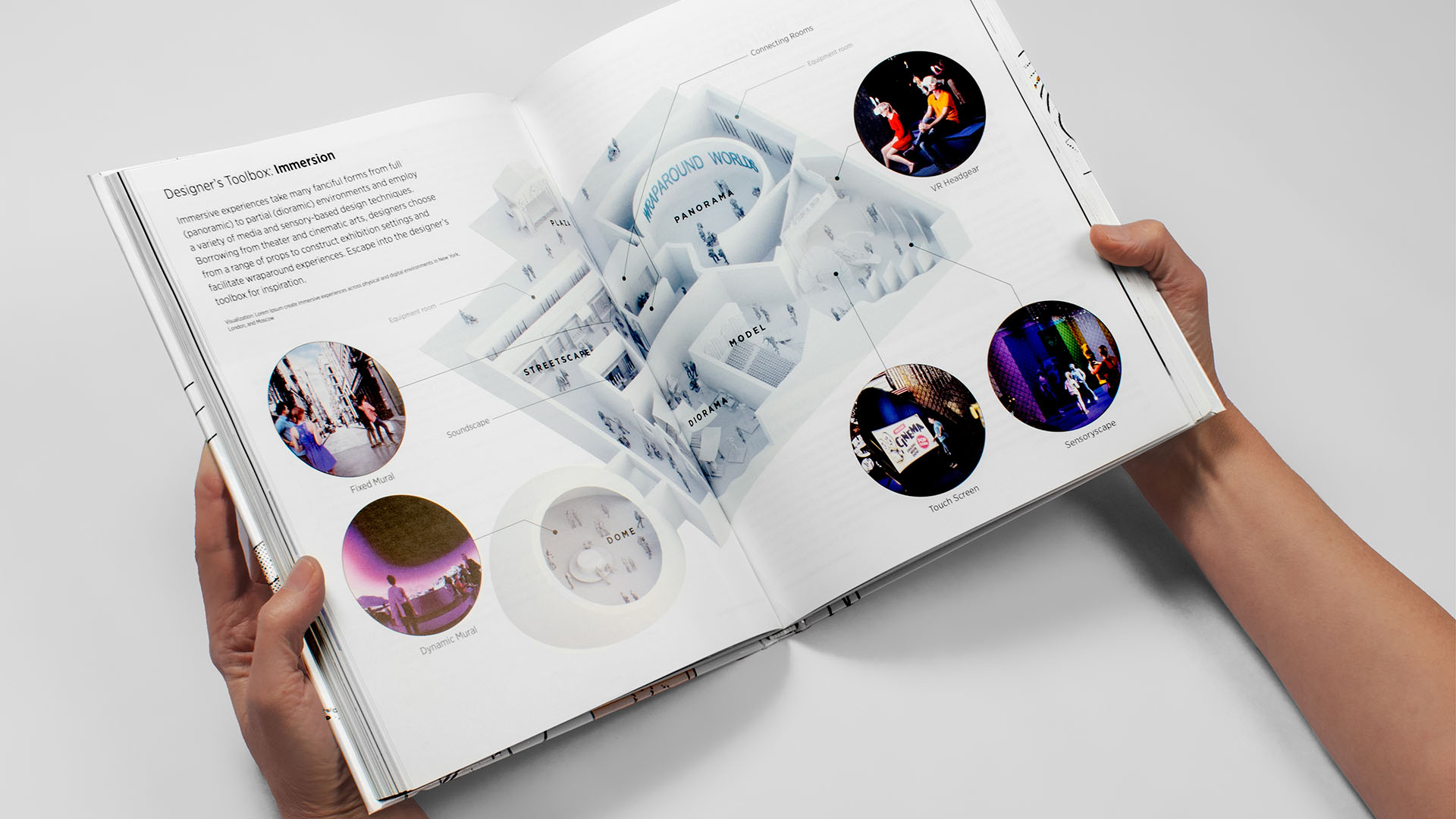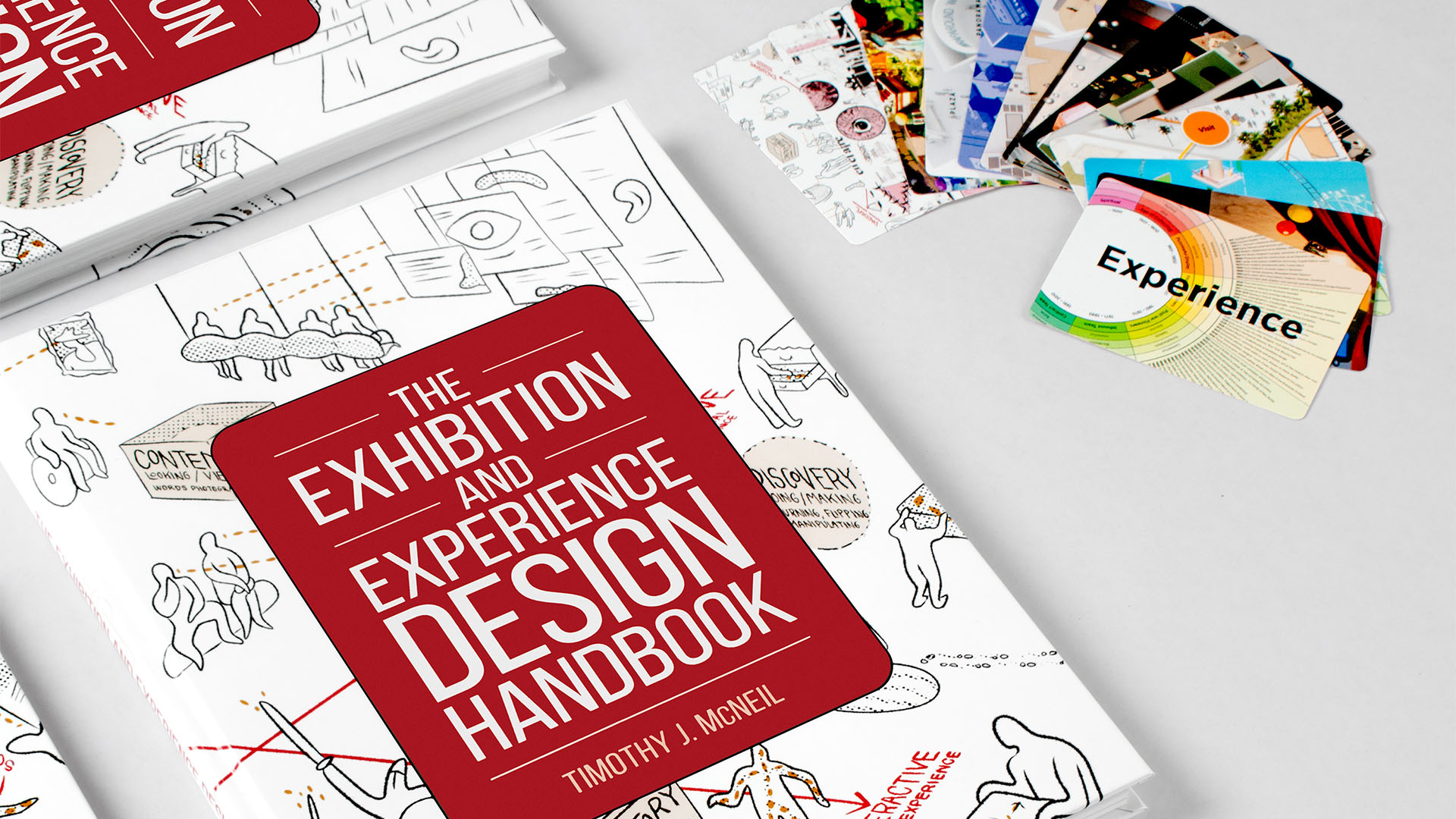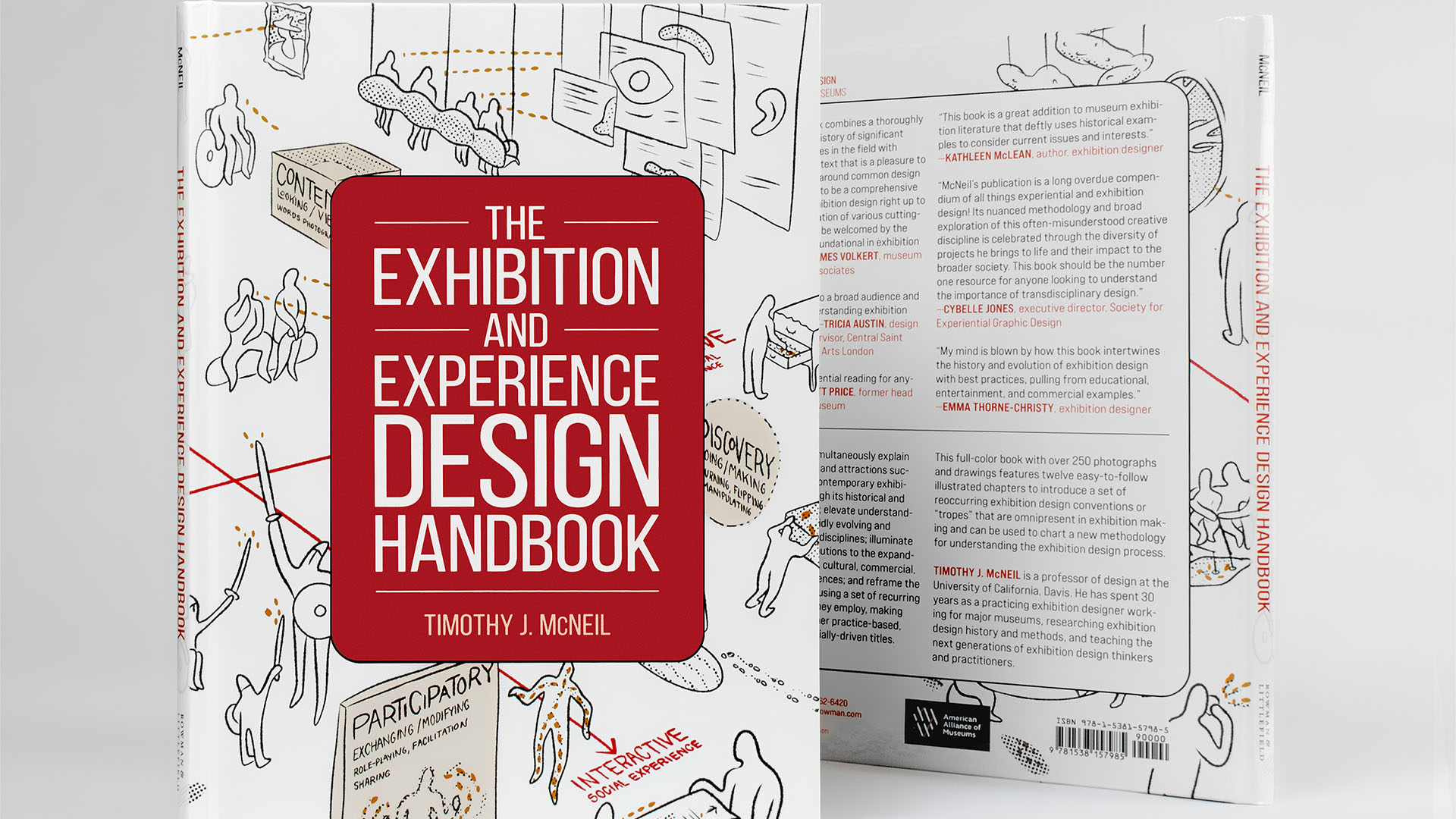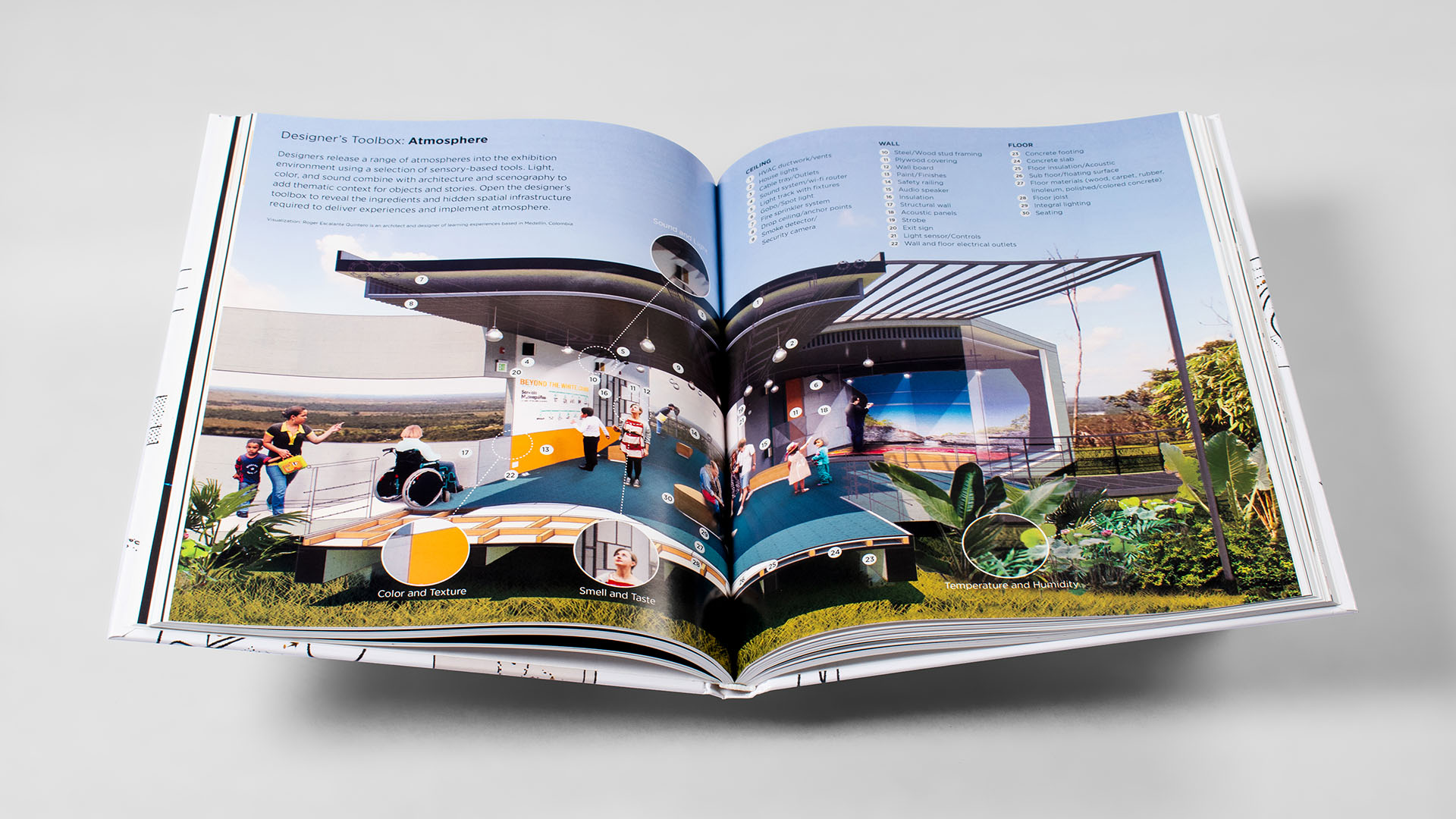The Exhibition and Experience Design Handbook
This is the first book and e-book to simultaneously explain how to design exhibitions and attractions successfully; contextualize contemporary exhibition design practice through its historical and theoretical underpinnings; elevate understanding of one of the most rapidly evolving and transdisciplinary creative disciplines; illuminate exhibition design’s contributions to the expanding global market for civic, cultural, commercial, and entertainment experiences; and reframe the exhibition design process using a set of recurring tropes and the methods they employ, making this book distinct from other practice-based, museological, or commercially-driven titles.
Agency
Rowman, Littlefield Publishers, Timothy McNeil
Practice Area
Client
Rowman & Littlefield Publishers, American Alliance of Museums
Industry
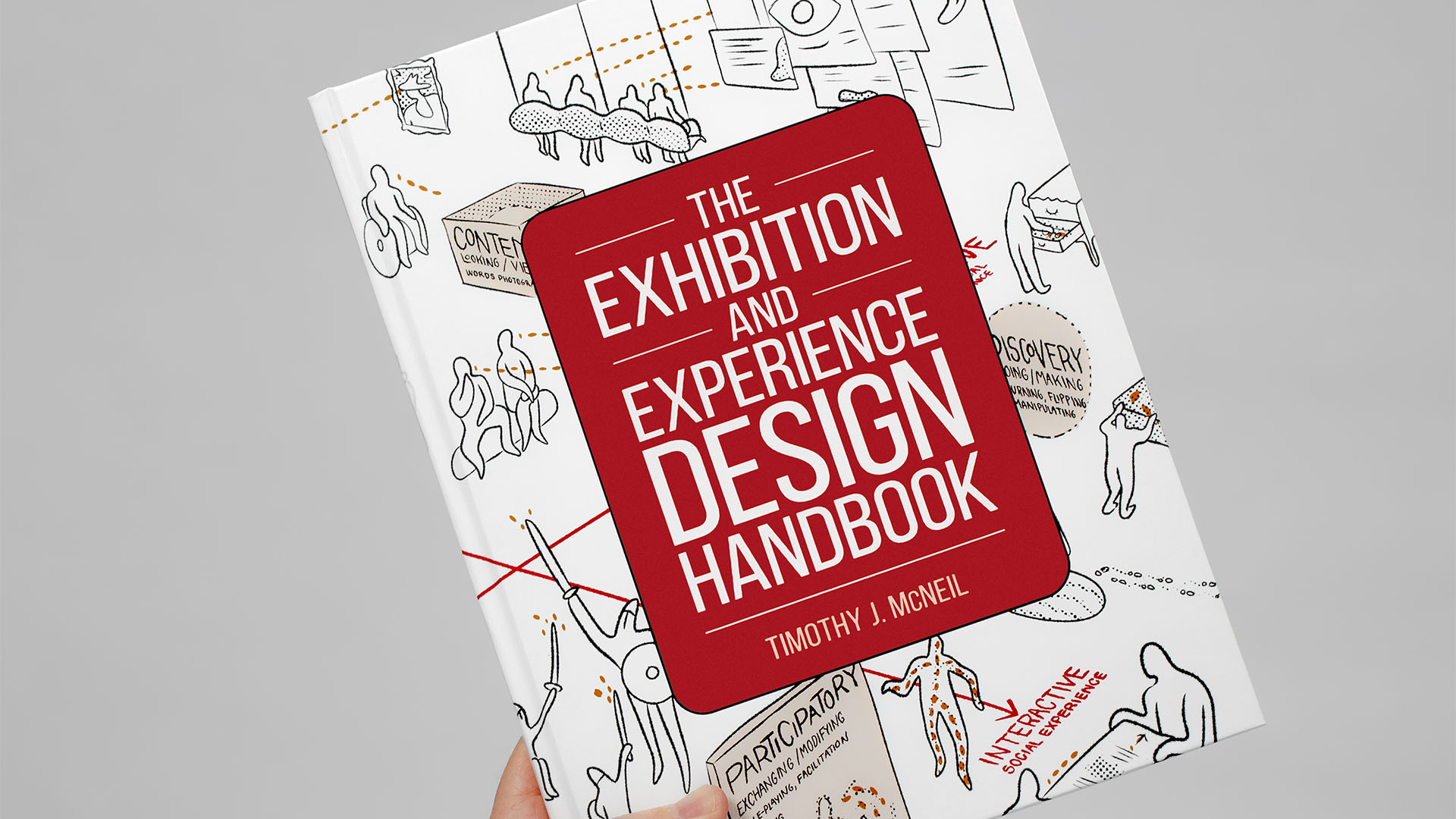
The Challenge
There was no major underwriter other than the publisher who funded the production. The author wrestled at first with whether the book format was a sustainable medium to keep pace with this dynamic field. The book’s multimodality of related website, posters, prompt cards, and SCORECARD extend the book’s reach, lifespan, and relevance—it represents an efficiency of effort and doing more with less. The book’s research and image acquisition were primarily funded by grants and the author’s professional practice.
The established and accepted history and theory of the exhibition and experience design field is largely seen through a Western lens. To redress this imbalance, the author includes global case studies that represent a diversity of viewpoints. Chapter visualizations for the Designer’s Toolbox are drawn by different hands to exemplify the various styles of rendering used to capture a range of exhibition environments during the design development process. Each commission intentionally reflects today’s multitude of styles, approaches, and voices from designers who are culturally and racially diverse and based in international design studios ranging from small to large who represent the future of the profession.
Project Vision
The book’s structure follows the same pedagogical approach the author uses to introduce exhibition making in the classroom, one that strives to seamlessly unite exhibition design history, theory, and practice. The contents are aimed at an academic and professional global audience with an emergent knowledge of the subject matter in places where exhibition/experience design are central to a growing experience economy and cultural tourism. Each chapter in the book is a call to action. Any one of them has the makings of an entire book unto itself. Scholars and practitioners are encouraged to pick up the mantle and expand each trope further—a compendium of twelve volumes to elevate the field of exhibition and experience design.

The Exhibition and Experience Design Handbook explains how to design exhibitions and attractions successfully and elevates the understanding of one of the most rapidly evolving and transdisciplinary creative disciplines.
Hector Valdivia
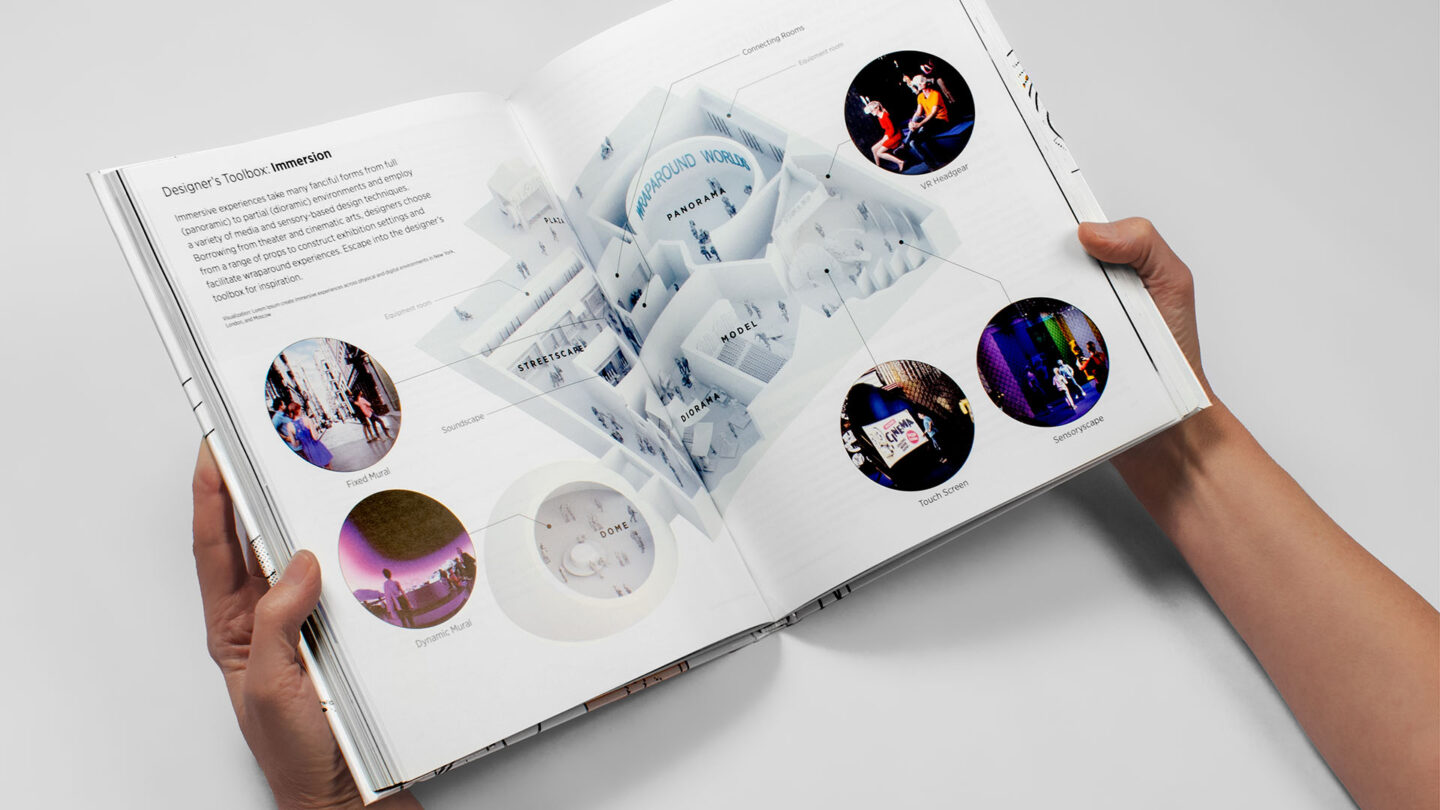
This full-color Handbook features twelve easy-to-follow illustrated chapters to introduce a set of reoccurring exhibition design conventions that chart a new methodology for understanding the exhibition design process.
Hector Valdivia
Design + Execution
The book’s structure follows the same pedagogical approach the author uses to introduce exhibition making in the classroom, one that strives to seamlessly unite exhibition design history, theory, and practice. The contents are aimed at an academic and professional global audience with an emergent knowledge of the subject matter in places where exhibition/experience design are central to a growing experience economy and cultural tourism. Each chapter in the book is a call to action. Any one of them has the makings of an entire book unto itself. Scholars and practitioners are encouraged to pick up the mantle and expand each trope further—a compendium of twelve volumes to elevate the field of exhibition and experience design.

The Handbook’s author created several free spin-off products to serve as educational resources including a deck of prompt cards to spark creativity during the exhibition and experience design process.
Hector Valdivia

Reviewers describe The Exhibition and Experience Design Handbook as accessible to a broad audience and destined to become essential reading for anyone in the field.
Hector Valdivia
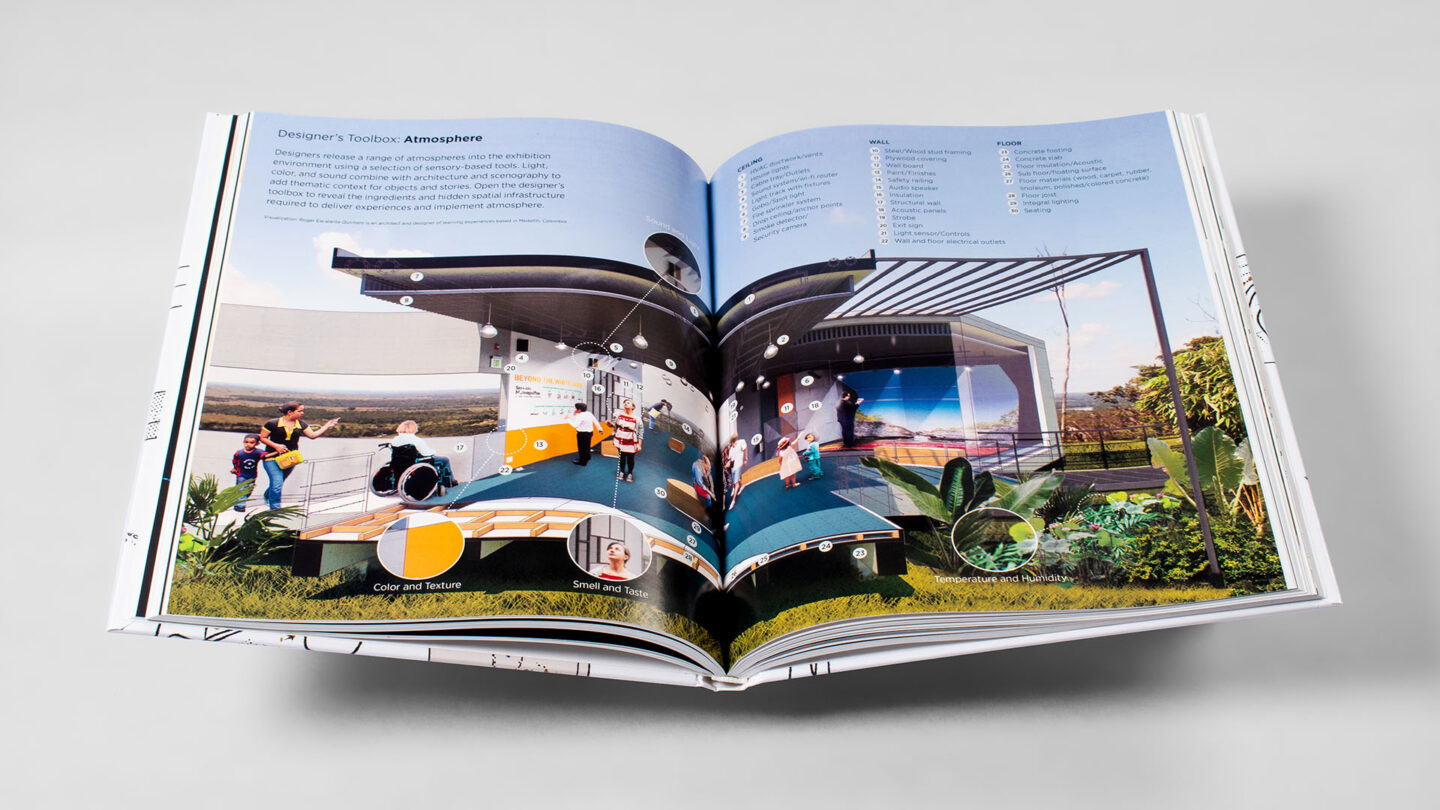
The Handbook’s chapter visualizations for the Designer’s Toolbox are drawn by a diverse group of designers who represent the future of the profession.
Hector Valdivia

The Handbook’s related website, posters, and prompt cards extend the book’s reach, lifespan, and relevance—it represents an efficiency of effort and doing more with less.
Hector Valdivia
Project Details
This comprehensive historical research is a much-needed foundation for aligning a foundation of best-practices in the field of experience and exhibition design. The interpretative layer of the book’s “toolkit” not only educates, but also empowers designers interested in this expansive field of practice.
This book stands out as a rich wellspring of inspiration for reimagining conceptual design within exhibition spaces. The depth of research and involvement of several backgrounds and practices made this book distinguishable from other similar books.
Design Team
Timothy McNeil (author)
Charles Harmon (senior executive editor)
Erinn Slanina (assistant editor)
Adrienne McGraw (image research and rights)
Kathy Borgogno (image research and rights)
Joan Shapiro (indexing)
Jessica Thwaite (production editor)
Collaborators
Magnús Elvar Jónsson (cover visualization)
Kai Sase Ebens (chapter visualizations and illustrations)
Zoey Ward (chapter visualizations and illustrations)
Claire Healy (chapter visualizations and illustrations)
Asma AlDabal (chapter visualizations and illustrations)
Noor AlKathiri (chapter visualizations and illustrations)
Sarah AlMaghlouth (chapter visualizations and illustrations)
Lydia Lee (chapter visualizations and illustrations)
Siddhartha Das (chapter visualizations and illustrations)
Roger Escalante Quintero (chapter visualizations and illustrations)
Evan Yang (chapter visualizations and illustrations)
Sayaka Koike (chapter visualizations and illustrations)
Jean-Pierre Dufresne (chapter visualizations and illustrations)
John Haden (chapter visualizations and illustrations)
Leidy Karina Gómez Montoya (chapter visualizations and illustrations)
Photo Credits
Hector Valdivia (book documentation)
Open Date
May 2023
